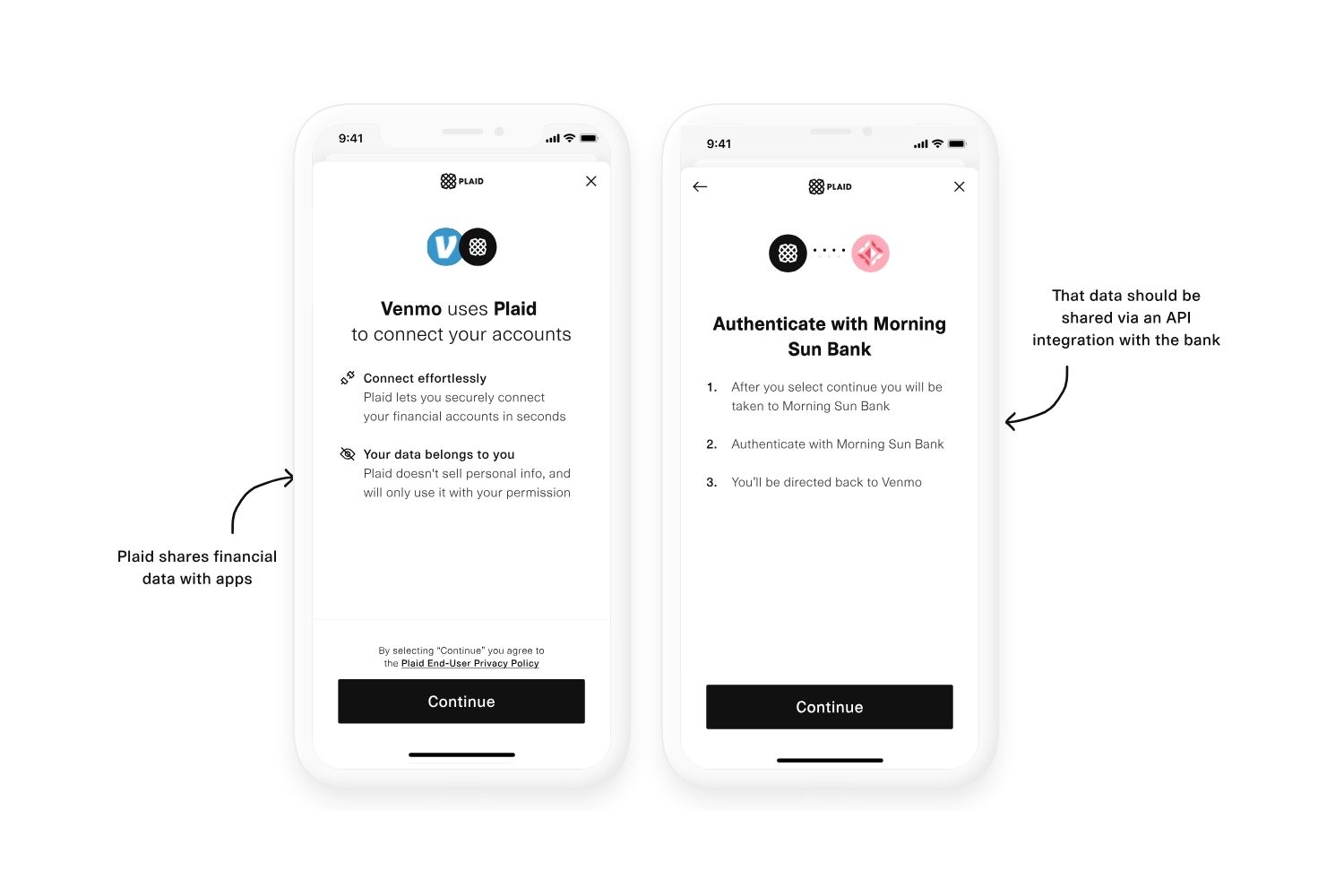Introduction
Welcome to the world of banking, where acronyms and jargon can sometimes make it challenging to fully understand the terms and concepts. One such abbreviation you may have come across is APY, which stands for Annual Percentage Yield. APY is a crucial metric to consider when choosing a financial product, such as a savings account, certificate of deposit (CD), or money market account.
APY represents the total amount of interest you will earn on your account over the course of a year, taking into account compounding. It is different from the simple interest rate because it considers the regular addition of interest to the principal amount, essentially allowing you to earn interest on your interest.
Understanding how APY is calculated and its significance in banking is essential for making informed financial decisions. In this article, we will dive into the world of APY, explore its calculation methodology, dissect the difference between APY and APR (Annual Percentage Rate), and uncover the reasons why APY is important in the realm of banking.
Whether you’re a seasoned financial expert or just getting started with managing your money, this article will provide you with the knowledge you need to navigate the world of APY.
What is APY?
APY, or Annual Percentage Yield, is a metric used by financial institutions to express the annual interest earned on an investment or deposit. It takes into account the effect of compounding, which is the process of earning interest on the initial principal as well as any accumulated interest.
APY is often used to compare the potential earnings of different accounts or investment products, such as savings accounts, certificates of deposit (CDs), or money market accounts. It provides a more accurate representation of the actual growth of your funds compared to a simple interest rate, as it factors in how frequently the interest is compounded.
For example, let’s say you have $1,000 in a savings account with an annual interest rate of 3%. If the interest is compounded annually, at the end of the year, you would earn $30 in interest, resulting in a total balance of $1,030. However, if the interest is compounded monthly, the APY would be slightly higher due to the compounding effect. In this case, the APY might be around 3.04%, resulting in a slightly higher balance of $1,030.40.
It’s important to note that APY takes into consideration both the base interest rate and the compounding frequency, giving a more accurate representation of the potential earnings on your investment over time.
By understanding the concept of APY, you can make more informed decisions when choosing financial products that offer the highest potential return on your investment. However, it’s also crucial to consider other factors such as fees, accessibility, and any withdrawal restrictions that may apply to the account.
How is APY calculated?
Calculating APY involves a relatively straightforward formula that takes into account the interest rate and compounding frequency. The formula is as follows:
APY = (1 + (r/n))^n – 1
Where:
- APY represents the Annual Percentage Yield
- r represents the annual interest rate
- n represents the number of compounding periods in a year
Let’s break down the formula with an example. Suppose you have a savings account with an annual interest rate of 4% that compounds quarterly. To calculate the APY, you would use the following formula:
APY = (1 + (0.04/4))^4 – 1
APY = (1.01)^4 – 1
APY = 1.0406 – 1
APY = 0.0406
APY = 4.06%
In this example, the APY is 4.06%, which means your savings account will earn an equivalent of 4.06% interest on an annual basis, factoring in the compounding effect. The more frequent the compounding, the higher the resulting APY will be, as interest is added to the principal more frequently throughout the year.
Financial institutions typically disclose the APY alongside the interest rate, allowing you to compare different accounts and understand the potential growth of your funds more accurately. Keep in mind that compounding can have a significant impact on long-term savings, as even small differences in APY can lead to substantial differences in overall earnings over time.
It is important to note that while APY is an effective tool for comparing different investment options, it is not the only factor to consider when making financial decisions. Other factors such as account fees, accessibility, withdrawal restrictions, and minimum balance requirements should also be taken into account.
The difference between APY and APR
While APY and APR may appear similar, they serve different purposes and represent different aspects of borrowing and saving. Understanding the distinction between the two can help you make more informed decisions when managing your finances.
APR, or Annual Percentage Rate, is a measure used to represent the cost of borrowing, such as on a loan or credit card. It includes the interest rate as well as any additional fees or charges associated with the loan. APR allows borrowers to compare the true cost of different loan options, taking into account both the interest rate and any charges.
On the other hand, APY, or Annual Percentage Yield, is a metric used to represent the potential earnings on an investment or savings account. It takes into account the interest rate and the frequency of compounding. APY gives a more accurate representation of the actual growth of your funds, as it factors in the compounding effect.
Let’s examine the difference between APY and APR with an example. Suppose you are comparing two savings accounts:
Account A:
- APY: 4%
- Compounding: Annually
Account B:
- APY: 4%
- Compounding: Monthly
Although both accounts have the same APY, the compounding frequency differs. Account B compounds interest monthly, while Account A compounds interest annually. This means that Account B will earn slightly more interest due to the more frequent compounding.
When it comes to APR, the focus is on borrowing costs. It includes not only the interest rate but also any additional charges, such as origination fees, closing costs, or annual fees. APR is useful for comparing loans or credit cards, allowing borrowers to understand the true cost of borrowing and make informed decisions based on the overall expenses associated with each option.
In summary, APY is used to represent the potential earnings on an investment or savings account, while APR represents the cost of borrowing. Both metrics are crucial in financial decision-making, allowing you to compare the growth potential of investments or savings accounts (APY) and the overall costs of borrowing (APR).
Why is APY important in banking?
APY, or Annual Percentage Yield, plays a significant role in banking and has several important implications for account holders. Understanding why APY is important can help you make informed decisions when choosing financial products and maximize your earnings. Here are a few key reasons why APY is crucial in the realm of banking:
Accurate comparison: APY provides a standardized metric to compare different financial products, such as savings accounts or certificates of deposit (CDs). By considering the APY, you can easily determine which account or investment option offers the best potential return. It allows you to see the actual growth potential of your funds, factoring in the compounding effect.
Earn more interest: Choosing an account or investment with a higher APY can lead to greater earnings over time. Even a seemingly small difference in APY can have a substantial impact on the overall growth of your funds, especially when compounded over long periods. The higher the APY, the more interest you can accumulate on your initial deposit.
Long-term financial goals: APY is particularly important for individuals with long-term financial goals, such as saving for retirement or a down payment on a home. By selecting accounts or investments with higher APY rates, you can potentially accelerate your savings and reach your goals more quickly.
Risk assessment: APY can also help you assess the risk associated with certain financial products. Typically, higher APY rates are offered on accounts or investments that involve higher risk. It’s important to evaluate the level of risk you are comfortable with before committing to an account or investment with a higher APY.
Inflation protection: APY can act as a hedge against inflation. By choosing financial products with APY rates higher than the inflation rate, you can ensure that the purchasing power of your money is preserved or even increased over time.
Overall, APY is important in banking as it provides a standardized measure to assess the growth potential of your funds and compare different financial products. By understanding APY and actively seeking higher rates, you can earn more interest, achieve your financial goals faster, and protect the value of your money against inflation.
The benefits of higher APY rates
Choosing financial products with higher APY rates can offer several advantages and benefits for account holders. While the specific benefits may vary depending on individual financial goals and circumstances, here are a few key advantages of opting for higher APY rates:
Increased earnings: The primary benefit of higher APY rates is the potential for increased earnings on your savings. With a higher APY, your money grows at a faster rate, allowing you to accumulate more interest over time. Even a small difference in APY can make a significant impact on your overall savings, especially when compounded over the long term.
Faster achievement of financial goals: Whether you’re saving for a down payment on a house, planning for retirement, or building an emergency fund, higher APY rates can accelerate your progress towards your financial goals. By earning more interest, you can reach your desired savings target sooner, providing you with financial security and peace of mind.
Protection against inflation: Inflation erodes the purchasing power of money over time. By choosing financial products with APY rates higher than the inflation rate, you can protect the value of your money. Higher APY rates enable your savings to grow at a pace that offsets the impact of inflation, ensuring that your money retains or even increases its real value.
Flexibility and accessibility: Some financial institutions offer accounts with tiered APY rates, where higher balances can earn even higher rates. This incentivizes customers to save more and rewards them with better returns. Additionally, with the accessibility of online banks, you can easily compare rates and open accounts with higher APYs, regardless of your geographic location.
Diversification of income streams: Higher APY rates provide an opportunity to diversify your income streams. By investing in accounts or investments with higher APYs, you can supplement your regular income with the interest earned. This diversified income approach can provide additional stability and financial security.
Ultimately, higher APY rates offer the potential for increased earnings, faster achievement of financial goals, protection against inflation, and the flexibility to diversify your income. When selecting financial products, carefully consider the APY rates, along with other factors such as fees, accessibility, and any withdrawal restrictions, to make the most advantageous choices for your financial future.
Factors that affect APY
APY, or Annual Percentage Yield, can be influenced by various factors that determine the growth and earnings potential of your investments or savings accounts. Understanding these factors can help you make informed decisions and maximize your returns. Here are some key factors that can affect APY:
Interest Rate: The interest rate is a fundamental factor that directly affects APY. A higher interest rate will result in a higher APY, leading to greater earnings over time. When comparing financial products, it’s important to consider the interest rate along with other factors to assess the overall potential return.
Compounding Frequency: The frequency at which interest is compounded plays a significant role in APY. Compounding can be done annually, semi-annually, quarterly, monthly, or even daily. The more frequent the compounding, the higher the APY will be. For instance, an account with monthly compounding will have a higher APY compared to an account with annual compounding, assuming the same interest rate.
Account Balance: Some financial institutions offer tiered APY rates, where higher balances yield higher rates. This incentivizes customers to save more and rewards those who maintain larger account balances. If you have the ability to maintain a higher balance, you may be eligible for a better APY rate.
Economic Factors: APY can be influenced by economic conditions, particularly fluctuations in interest rates set by central banks. When interest rates rise, financial institutions may increase the APY rates on savings and investment products to attract customers. Conversely, when interest rates fall, APY rates may decrease as well.
Account Terms and Conditions: The terms and conditions of a specific account can also impact APY. Some accounts may offer promotional or introductory rates for a limited period, after which the rate may decrease. Additionally, certain accounts may have minimum deposit requirements or specific eligibility criteria that can affect the APY you are eligible for.
Market Competition: Competition among financial institutions can drive APY rates higher as banks strive to attract customers. It’s always a good idea to compare APY rates offered by different institutions to ensure you are getting the most competitive rate available.
It’s important to note that these factors can have an interdependent relationship and may vary among different financial institutions. Therefore, it’s crucial to consider all factors collectively and evaluate their impact on your overall financial strategy.
How to compare APY rates
When selecting a financial product, such as a savings account or investment, comparing APY rates is crucial to ensure you are maximizing your earnings. Here are some key steps to help you effectively compare APY rates:
Research and gather information: Start by researching various financial institutions and their offerings. Look for banks, credit unions, or online savings accounts that provide the types of accounts you are interested in. Understand their APY rates and any associated terms and conditions.
Consider compounding frequency: Take into account the compounding frequency when comparing APY rates. Institutions may compound interest annually, quarterly, monthly, or even daily. Generally, the more frequent the compounding, the higher the APY will be. Evaluate how often interest is compounded to get an accurate picture of the potential growth of your funds.
Look beyond introductory rates: Financial institutions often offer promotional or introductory rates to attract customers. While these rates may seem attractive initially, they tend to expire after a certain period. Consider the APY rate after the promotional period ends to assess the long-term potential of the account.
Compare rates across different institutions: Look beyond your current bank and explore offerings from other institutions. Visit their websites, contact customer service, or use online comparison tools to compare APY rates side by side. Pay attention to any special promotions or limited-time offers that may affect the rates.
Evaluate additional fees and requirements: Consider any fees or requirements associated with the accounts. Some accounts may have monthly maintenance fees, withdrawal fees, or minimum balance requirements. Assess how these factors may impact your overall earnings and financial goals.
Read customer reviews and ratings: Research the reputation of the financial institutions you are considering. Read customer reviews and ratings to gain insights into their customer service, account management, and reliability. A reputable institution with positive customer feedback can give you more confidence in your decision.
Consider your specific financial goals: Each individual has unique financial goals and circumstances. Consider how the APY rates of different accounts align with your specific objectives. For example, if you are saving for a short-term goal, a high-yield savings account with a competitive APY might be a good fit. If you have a long-term horizon, a certificate of deposit (CD) with a higher APY might be more suitable.
By following these steps, you can effectively compare APY rates and identify the financial products that offer the best potential returns for your specific needs. Remember to consider factors beyond just APY, such as fees, availability of funds, and the overall reputation of the institution, to make an informed decision.
APY vs. interest rate: What’s the difference?
APY (Annual Percentage Yield) and interest rate are two commonly used terms in the financial world, but they represent different aspects of earning potential. Understanding the difference between APY and interest rate is crucial when evaluating different financial products. Here’s a breakdown of their distinctions:
Interest Rate: The interest rate, also known as the annual interest rate or nominal interest rate, represents the percentage of interest that a financial institution pays on an investment or charges on a loan on an annual basis. It is the base rate that determines the amount of interest you will earn or pay without considering the effects of compounding.
APY: APY, on the other hand, takes into account the compounding effect when calculating the potential earnings on an investment or savings account. APY considers how frequently the interest is compounded and provides a more accurate representation of the actual growth of your funds. APY reflects the total amount of interest you will earn in a year, including the interest earned on the initial principal as well as any accumulated interest.
While the interest rate provides a straightforward figure indicating the percentage of interest earned or paid, APY gives a more comprehensive understanding of the true growth potential of an investment or account. APY takes into consideration the compounding frequency, allowing you to earn interest on your interest.
For example, suppose you have two savings accounts with interest rates of 5% per year, but Account A compounds interest annually, while Account B compounds interest monthly. At first glance, the interest rates for both accounts are the same. However, when you calculate the APY, you’ll find that Account B, with its more frequent compounding, will have a higher APY due to the compounding effect.
It’s important to note that the interest rate and APY are related but not interchangeable. Interest rate serves as a basis for calculating APY. APY takes the interest rate and compounding frequency into account, providing a more accurate representation of the earning potential of an investment or savings account.
When comparing financial products, it’s essential to consider both the interest rate and APY. The interest rate helps you understand the base return or cost, while the APY gives you a comprehensive view of the actual growth or expense. By evaluating both figures, you can make informed decisions and choose financial products that align with your specific financial goals and needs.
Tips for maximizing your APY
Maximizing your APY (Annual Percentage Yield) can significantly boost your savings and investment returns. Here are some tips to help you maximize your APY and make the most of your financial endeavors:
Shop around for higher APY rates: Take the time to research and compare APY rates offered by different financial institutions. Look beyond your current bank and explore online banks or credit unions that may provide higher rates. Even a slight difference in APY can result in significant earnings over time, so it’s worth finding the best rates available.
Consider high-yield savings accounts and CDs: High-yield savings accounts and certificates of deposit (CDs) often offer higher APY rates compared to traditional savings accounts. Explore these options to find accounts that provide competitive rates while still offering the accessibility and flexibility you require.
Utilize promotional offers: Financial institutions may offer promotional APY rates for new customers or for a limited time. Take advantage of these offerings as they can provide higher returns for a specific period. Just be sure to understand any terms and conditions, such as minimum deposit requirements, to qualify for the promotional rate.
Consider tiered APY rates: Some accounts offer tiered APY rates, where higher balances earn higher rates. If you have the capacity to maintain a higher account balance, opt for accounts that reward larger balances with better APY rates. This can significantly enhance your earnings.
Automate your savings: Set up automatic transfers from your checking account to your savings account to ensure consistent savings. Automating your savings helps you build your balance faster and take advantage of the compounding effect, leading to higher APY over time.
Monitor your account regularly: Keep track of your savings or investment account to ensure that the APY rates remain competitive. Financial institutions may adjust rates periodically, so stay informed about any rate changes. This will allow you to make adjustments or consider moving your funds if you find better APY rates available elsewhere.
Avoid unnecessary fees: Be mindful of account fees, such as monthly maintenance fees or withdrawal fees, as they can eat into your overall returns. Look for accounts that offer competitive APY rates while minimizing fees to maximize your earnings.
Consider long-term investments: For individuals with a longer investment horizon, consider options such as certificates of deposit (CDs) or other long-term investments. These may offer higher APY rates as an incentive to lock in your funds for an extended period.
By implementing these tips, you can effectively maximize your APY and optimize your savings and investment returns. Remember to regularly review and reassess your financial goals to ensure that your chosen accounts align with your objectives and provide the highest potential APY rates.
Conclusion
Understanding APY, or Annual Percentage Yield, is essential for navigating the world of banking and making informed financial decisions. APY represents the total amount of interest you will earn on an investment or savings account, considering compounding. It gives a more accurate representation of the actual growth and earnings potential of your funds compared to a simple interest rate.
Throughout this article, we have explored the importance of APY in banking and its impact on your financial journey. We discussed how APY is calculated, the difference between APY and APR (Annual Percentage Rate), and why APY is significant in banking. Additionally, we highlighted the benefits of higher APY rates, the factors that can affect APY, and offered tips for maximizing your APY.
By understanding APY and considering other factors such as fees, accessibility, and withdrawal restrictions, you can choose financial products that align with your financial goals and maximize your earnings. Whether you are saving for a short-term goal or planning for long-term financial security, APY allows you to assess the growth potential of various accounts and investments.
Remember to regularly review your accounts and compare APY rates to ensure that you are still getting the best returns. Financial products and rates can change overtime, and staying informed will allow you to make adjustments or take advantage of new opportunities.
Ultimately, APY is a powerful metric that empowers you to make informed decisions and optimize your financial well-being. By utilizing the knowledge and understanding gained in this article, you can navigate the world of banking with confidence and make choices that will lead to a brighter financial future.

























